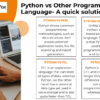In the ever-evolving landscape of surgical techniques, single-port robotic surgery has emerged as a groundbreaking approach, offering both challenges and exciting opportunities for the medical community.
This minimally invasive procedure, also known as single-site or single-incision robotic surgery, involves performing surgical interventions through a single small incision, reducing the impact on the patient’s body.
This article delves into the intricacies of single-port robotic surgery, exploring the challenges faced by practitioners and the promising opportunities that lie ahead.
Embracing Innovation in Surgical Techniques
Advancements in surgical technology have paved the way for innovative techniques that prioritize patient outcomes and recovery.
Single-port robotic surgery represents a significant leap forward in this regard.
Unlike traditional open surgeries, which require large incisions, or conventional laparoscopic procedures with multiple incisions, single-port robotic surgery relies on a single access point.
This approach is particularly advantageous in terms of reduced scarring, faster recovery times, and decreased postoperative pain.
The Mechanics of Single-Port Robotic Surgery
The Robotic Armamentarium
At the core of single-port robotic surgery is a sophisticated robotic arm system that provides surgeons with enhanced precision and control.
These robotic arms are equipped with miniature instruments that can be inserted through a single incision, allowing for a range of complex maneuvers within the body.
The surgeon operates these robotic arms from a console, translating their hand movements into precise actions within the patient’s body.
Challenges in Instrument Maneuverability
While the robotic armamentarium offers unparalleled precision, challenges arise when it comes to maneuverability within the confined space of a single incision.
Surgeons must navigate limited angles and workspaces, requiring high skill and adaptability.
Overcoming these challenges is crucial for ensuring the success and safety of single-port robotic surgeries.
Navigating Challenges in Single-Port Robotic Surgery
Learning Curve for Surgeons
The adoption of single-port robotic surgery presents a learning curve for surgeons accustomed to traditional methods.
Mastering the nuances of operating through a single incision demands training and experience.
Surgeons must become adept at manipulating the robotic arms in tight spaces while maintaining a clear view of the surgical site through the robotic camera system.
Instrument Clashing and Cross-Talk
With multiple instruments converging within a single incision, the potential for instrument clashing and cross-talk arises.
This challenge necessitates the development of innovative instrument designs and improved robotic systems to mitigate interference.
Engineers and surgeons collaborate to refine the technology, addressing issues related to instrument collisions and optimizing the workflow.
Limited Range of Motion
The confined space of a single incision limits the range of motion for robotic instruments.
Surgeons may face challenges in accessing certain areas or performing intricate maneuvers.
Ongoing research and development focus on expanding the range of motion through improved instrument design and robotic arm capabilities.
Opportunities on the Horizon
Enhanced Patient Outcomes
As single-port robotic surgery evolves, it holds the promise of delivering enhanced patient outcomes.
Reduced scarring, minimized trauma, and faster recovery times contribute to a higher quality of life for patients undergoing these procedures.
The shift towards more patient-friendly surgical options aligns with the broader goal of improving healthcare experiences.
Expanded Applications in Various Specialties
While single-port robotic surgery initially found application in urology and gynecology, ongoing research is expanding its reach into other medical specialties.
General surgery, colorectal surgery, and even cardiothoracic procedures are now being explored for the feasibility of single-port approaches.
This expansion opens new doors for surgeons to offer minimally invasive options across a spectrum of medical disciplines.
Technological Advancements and Innovation
The challenges inherent in single-port robotic surgery are driving continuous innovation in robotic technology.
Engineers and medical professionals collaborate to develop more advanced robotic systems with improved instrument capabilities, enhanced visualization, and intelligent automation.
These technological advancements not only address current challenges but also pave the way for the next frontier in minimally invasive surgery.
The Role of Connectivity – Spectrum Internet
In the realm of cutting-edge medical technologies, seamless connectivity is paramount. Surgeons rely on real-time data transmission, high-resolution imaging, and precise control of robotic systems.
Spectrum Internet, with its high-speed and reliable connectivity, plays a pivotal role in supporting the intricate communication requirements of single-port robotic surgery.
A stable and robust internet connection ensures that surgeons can operate with precision, access critical information, and collaborate seamlessly during procedures.
Optimizing Surgical Workflows
The integration of Spectrum Internet into the surgical environment optimizes workflows by facilitating instant communication and data transfer.
Surgeons can access medical records, consult with colleagues, and leverage online resources without disruptions.
This connectivity enhances the overall efficiency of single-port robotic surgeries, contributing to improved patient outcomes.
Telemedicine and Remote Assistance
In the era of interconnected healthcare, Spectrum Internet enables telemedicine applications and remote assistance.
Surgeons can consult with specialists in real time, irrespective of geographical distances.
This capability is particularly valuable for sharing expertise, obtaining second opinions, and enhancing the collective knowledge of the medical community.
Expanding Horizon – Single-Port Robotic Surgery Across Medical Specialties
General Surgery – Embracing Minimally Invasive Techniques
Single-port robotic surgery has made significant inroads into general surgery, offering a minimally invasive alternative for a spectrum of procedures.
Surgeons in this field have successfully utilized single-port approaches for appendectomies, cholecystectomies, and hernia repairs.
The adaptability of the robotic arm system allows for precise maneuvers within the abdominal cavity, minimizing trauma and accelerating recovery for patients undergoing common general surgical interventions.
Colorectal Surgery – Advancements in Complex Procedures
In the realm of colorectal surgery, single-port robotic techniques are gaining traction for their potential to address complex conditions such as colorectal cancer and inflammatory bowel disease.
Surgeons employ single-port approaches for colectomies and rectal resections, leveraging the enhanced visualization and dexterity provided by robotic systems.
This application of single-port robotic surgery in colorectal procedures showcases its versatility and the ability to navigate intricate anatomical structures with precision.
Cardiothoracic Procedures – Pioneering Innovation in the Heart and Lungs
The field of cardiothoracic surgery has witnessed the exploration of single-port robotic approaches for various procedures.
Surgeons are exploring the feasibility of utilizing this technique for minimally invasive cardiac surgeries, including mitral valve repairs and coronary artery bypass grafting (CABG).
By accessing the heart and lungs through a single incision, cardiac and thoracic surgeons aim to reduce postoperative complications, enhance patient recovery, and revolutionize the landscape of cardiothoracic interventions.
Gastrointestinal Surgery: Tailoring Solutions for Digestive Disorders
Gastrointestinal surgery encompasses a broad range of procedures, and single-port robotic surgery is finding applications in addressing conditions such as gastroesophageal reflux disease (GERD) and achalasia.
Surgeons employ single-port techniques for fundoplication procedures and Heller myotomies, capitalizing on the benefits of reduced scarring and quicker recuperation.
The adaptability of the robotic arm system allows for precise suturing and dissection in the confined space of the gastrointestinal tract.
Head and Neck Surgery – Navigating Precision in Delicate Procedures
In the realm of head and neck surgery, single-port robotic approaches are being explored for procedures such as thyroidectomy and neck dissections.
The intricate anatomical structures in this region demand precision, and the enhanced visualization and dexterity provided by robotic systems contribute to improved surgical outcomes.
Single-port robotic surgery in head and neck procedures aims to minimize scarring, reduce postoperative discomfort, and optimize the surgical experience for patients.
Orthopedic Surgery: Redefining Minimally Invasive Joint Procedures
Orthopedic surgeons are venturing into the realm of single-port robotic surgery for joint procedures, particularly in arthroscopy.
Knee and shoulder arthroscopies, for example, benefit from the use of robotic arms that can be maneuvered through a single incision.
This approach minimizes trauma to surrounding tissues, reduces the risk of infection, and accelerates the recovery process for patients undergoing orthopedic interventions.
Neurosurgery – Precision in Intricate Brain Procedures
While still in the early stages of exploration, single-port robotic surgery is making strides in neurosurgical applications.
Surgeons are investigating its potential for certain brain procedures, such as tumor resections and epilepsy surgeries.
The ability to navigate the delicate structures of the brain with enhanced precision and minimal invasiveness is a promising avenue in the evolution of neurosurgical techniques.
Conclusion
Single-port robotic surgery stands at the intersection of medical innovation and technological advancement, offering a transformative approach to minimally invasive procedures. While challenges persist, the opportunities presented by this evolving field are vast and promising.
Surgeons, engineers, and connectivity providers like Spectrum Internet are collaboratively shaping the future of surgery, pushing the boundaries of what is possible and ultimately improving the lives of patients worldwide.
As the journey continues, the dynamic interplay of challenges and opportunities will propel single-port robotic surgery into a new era of surgical excellence.







